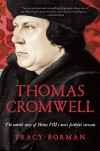SusannaG - Confessions of a Crazy Cat Lady
Just another GR refugee. Other than that, I had a stroke in 2004, and read almost anything I can get my hands on, though I have a particular weakness for history, mystery, and historical fiction.
Currently reading
The Riddle of the Labyrinth

A very interesting book on how Linear B (one of three ancient scripts found on Crete - the other two, Minoan hieroglyphic and Linear A, remain a mystery, alas) was deciphered.
Sir Arthur Evans, who discovered the ancient Minoan civilization at Knossos in 1900, gets three chapters. Alice Kober, an American classicist who did important work on the script in the 1930s and 1940s (and made some crucial discoveries), gets five. Michael Ventris, the English architect who broke Linear B in the early 1950s, gets four chapters.
Alice Kober is followed lovingly and in detail. The author is clearly less interested in Evans and Ventris, but she may well have concluded that their work is more heavily trodden ground. I've been interested in the Minoans, Mycenaeans, and Linear B since the late 1970s, but had never heard of Kober, for example. So perhaps she was justified in giving Kober such coverage. But it did make the material on Ventris seem a little lacking in comparison.
I was fascinated by how "dog in the manger" all the archaeologists were. Evans: "I have 2000 Linear B tablets, but you can only use the 200 I published in 1909 to work with until I finish the big book on the subject. Have fun, kids!" Myre, Evans' associate: "You still can't have them until I finish the master's book! Unless you want to do my secretarial work." Carl Blegen: "You can't have my tablets from Pylos, because they're in a Greek bank vault and I really hope the Nazis haven't taken them." (OK, I'll buy that one.)
I also enjoyed the epilogue on what the tablets, when deciphered, turned out to be written about. (Hint: it wasn't high literature. Or low literature, for that matter. Try: bureaucracy is eternal.)
















 13
13
 3
3